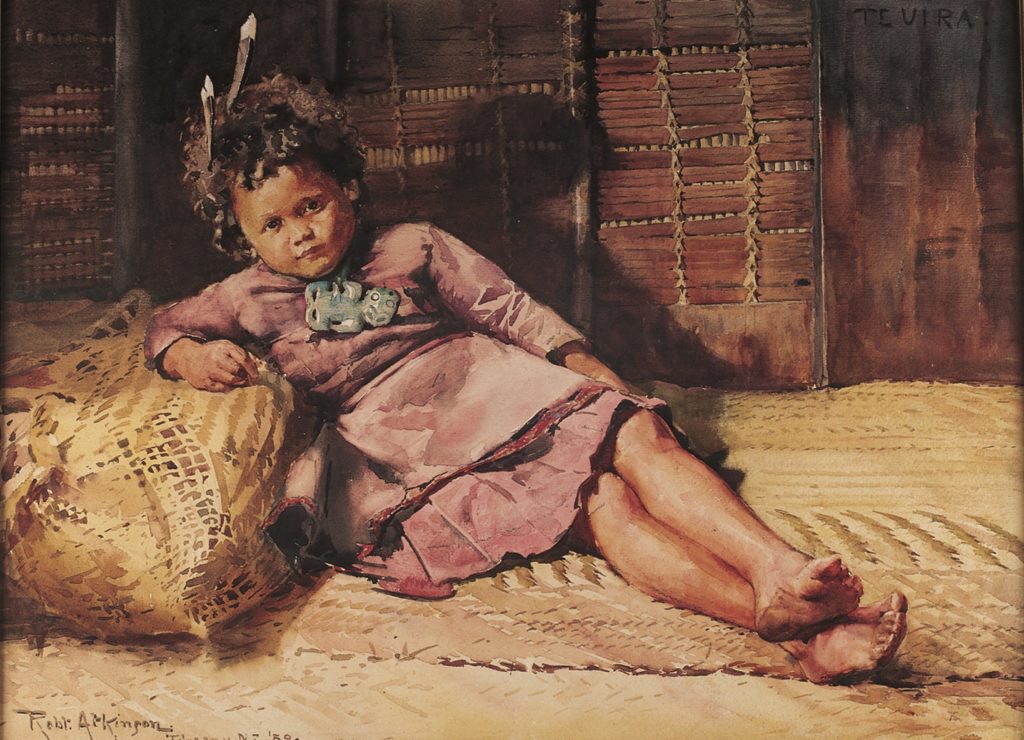ARTISTS Sandy Adsett, Robert Atkinson, Francis Dillon Bell, Nicholas Chevalier, Shane Cotton, Augustus Earle, Robert Ellis, Charles Goldie, Michael Hight, Robyn Kahukiwa, Emare Karaka, Colin McCahon, Selwyn Muru, Buck Nin, Peter Robinson, Horatio Robley, Gordon Walters CURATORS Peter Shaw, Jo Diamond ORGANISERS Fletcher Trust, Auckland; Sarjeant Gallery, Whanganui OTHER VENUES Sarjeant Gallery [dates]; Tauranga Art Gallery, 12 April–8 June 2008; Christchurch Art Gallery, 19 December 2008–15 February 2009; Waikato Museum, Hamilton, 1 May–1 September 2010 PUBLICATION Publishers Fletcher Trust, Sarjeant Gallery; essays Peter Shaw, Jo Diamond
Many works are rooted in contention, resulting from colonisation. Francis Dillon Bell’s New Zealand Bush (c.1845), for instance, appears to be a mere botanical record. But, as a government official, Bell was involved in early Māori land purchases in the Nelson and Wairarapa regions. In New Zealand Bush, he seems to excuse himself from these political realities in favour of representing a sublime natural world, unconquerable by man.
The show tracks a visual history, from early European contact—the earliest works are handcoloured engravings of Māori architecture, weaponry, and utensils from 1826—through settlement, colonisation, protest, etcetera. Works are grouped by themes: 'Mana-a-iwi/Mana of the People', 'Mana Whenua/Mana of the Land', 'Taonga/All that Is Valued', Whawhai/Protest', 'Whai Mana/Mana Renewed', and 'Te Ao Whānui/In the Wider World'.
In 'Taonga/All that is Valued', early anthropological studies by European explorers and settlers are presented alongside works by contemporary Māori artists: Selwyn Muru's Māori Rock Drawing (1966) and Shane Cotton's Stack (1991).
Diamond claims, 'You can see throughout the exhibition how over time the Māori voice becomes stronger.' According to a Dominion Post review, 'The exhibition was timely as people were now willing to take a more critical view of historical and current events.'



















































